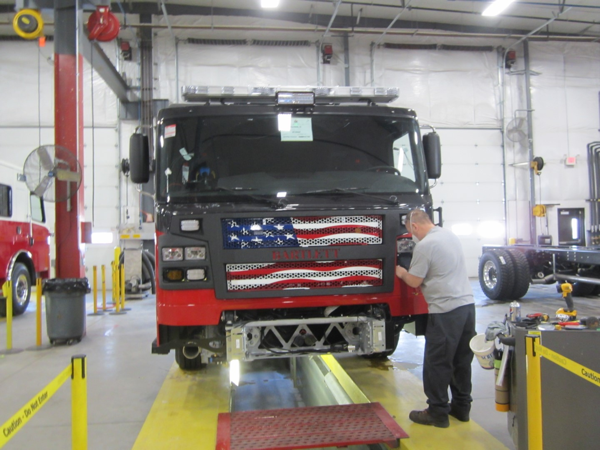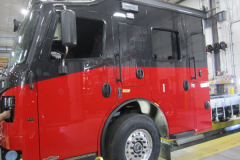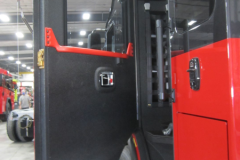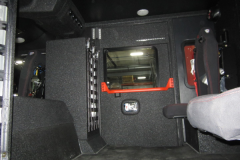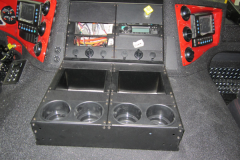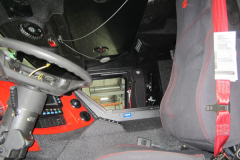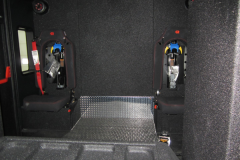Another installment about History of Evanston Fire Department
Annual EFD salaries in 1901 ranged from $1,500 (Fire Marshal) to $960 (Engineer) to $780 (Captain and Assistant Engineer) to $720 (Fireman). All company members worked 24 hours on duty followed by a 12-hour furlough. A fireman absent during a scheduled tour of duty was not paid, no matter the reason for the absence (illness, injury received on duty, or furlough). Meal breaks were taken at home or in a nearby restaurant.
At 11:20 AM on a bitter cold Sunday December 15, 1901, and a fire was reported at the Hoyt Flats at 1301 Judson Ave. All residents were evacuated safely, but the Evanston Fire Department was unable to control the blaze, so assistance was requested from the Chicago Fire Department. Three firefighters were injured battling the blaze, as fireman Al Hofstetter of Engine Co. 1 sustained a sprained shoulder after falling from a ladder, fireman John Steward of Hose Co. 2 suffered frostbite to both feet, and fireman Charles Harvey of Chicago F. D. Truck Co. 25 sustained multiple bruises after falling from a frozen ladder. $15,000 damage to the flats was caused before the fire was extinguished, making it one of the top ten highest damage estimates from a fire in Evanston’s history up to that point in time.
August 1902 saw Evanston firefighters Al Hofstetter, John Eckberg, Ed Johnson, and William Pruter and EFD horses “Bob” and “Dan” return triumphantly to Evanston after winning the prestigious “Firemen’s Competition” in Blue Island. The Evanston Military Band met the champs on Main Street, and, after a victory parade up Chicago Avenue, Davis Street area merchants hosted a dinner for the victors at the Avenue House hotel. The firemen won the contest by driving a harnessed team (that would be Bob and Dan) 1/3 of a mile, leading-out 150 feet of hose line from the hose cart, connecting the hose to a hydrant and a nozzle to the lead, and throwing water, all in 18.2 seconds. The firefighters collected a $75 prize, and it was extra oats for Bob and Dan.
The Evanston Firemen’s Benevolent Association (EFBA) was chartered with the State of Illinois on November 5, 1902. For more than ten years — until the Evanston Firemen’s Pension Fund was fully funded in December 1915 — the EFBA was the main source of support for disabled Evanston firemen, and for the families of deceased firefighters. An EFBA benefit show was held each December through 1912, usually a vaudeville show, musical revue, or play.
The first benefit show in 1902 was a screening of the now-classic Edwin S. Porter silent film melodrama The Life of an American Firemen, and the final show in 1912 was a performance of a play called The Still Alarm, featuring several Evanston firemen and two beloved EFD horses named “Sharkey” and “Buttons.” (Besides biting the buttons off the clothing of anyone who might come near, “Buttons” could also turn on a water faucet by himself, a feat he performed in the play).
Beginning in 1903, the City of Evanston purchased life insurance for each member of he fire department that would pay a member $5 per month in case of disability or illness, with a $1,000 survivor benefit in case of death.
From 1900 to 1904, the Evanston Fire Department doubled in size. Manpower was increased from 14 in 1900 to 28 in 1904, and the number of horses increased from eight to 16, as one engine company, two truck companies, and one hose company were in service in three modern fire stations by 1903.
February 15, 1903 (in particular) was a big day for the Evanston Fire Department.
1. The new (rebuilt) $6,000, three-bay Fire Station #2 at 750 Chicago Avenue opened:
2. Manpower at Station #2 was increased from three to six (a captain, a lieutenant, and four firemen), as Hose Co. 2 was reorganized as a truck company (Truck Co. 2);
3. A Seagrave combination truck (a combined hook & ladder and chemical engine) was placed in service at Station #2;
4. The 15-man Engine Co. 1 was split into two companies, as Truck Co. 1 was organized at Fire Station # 1;
5. A captain, a lieutenant, an engineer, an assistant engineer, and five firemen were assigned to Engine Co. 1, and a captain, a lieutenant, and four firemen were assigned to Truck Co. 1, with Engine Co. 1 operating with the Ahrens steamer and a hose wagon, and Truck Co. 1 operating with the Davenport H&L and the Babcock chemical engine;
6. George Hargreaves was promoted to captain, joining Jack Sweeting, Carl Harms, and Carl Harrison as the EFD’s four company officers, and firemen Albert Hofstetter, Thomas Norman, and John Watson were promoted to lieutenant (assistant company officer).
Only Hose Co. 3 at Fire Station #3 continued as a three -man company (as they did until 1912), with just a captain and two firemen operating with a four-wheeled two-axle hose wagon.
All EFD rigs — the steamer, the H&L, the chemical engine, the combination truck, the three hose wagons, and the chief’s buggy — had a two-horse hitch.
From the outset, Truck Co. 1 gained a reputation as the “bad boys” of the Evanston Fire Department. One member of the company was fired by the Civil Service Board in 1904 after being convicted of insubordination, and three more members of the company were fired and another was suspended when they were discovered drinking alcohol on-duty at the firehouse. The man who was suspended but not fired did not deny he was intoxicated, but he claimed he had been drinking at home prior to reporting for work, and that he would never drink while on duty.
